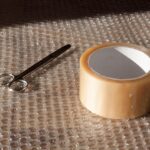
Mastering DIY Car Wrapping: Top Tips for a Flawless Finish
Transforming your vehicle with a stunning wrap is an exciting project that can enhance its appearance and provide protection. With the right techniques and materials, you can achieve a professional-looking finish right from your garage. Here are some essential DIY car wrapping tips to help you along the way.
Step 1: Surface Preparation
Before diving into the wrapping process, it’s crucial to prepare your car’s surface properly. A clean and smooth surface ensures that the wrap adheres well and looks flawless.
Cleaning Your Vehicle
- Wash: Start by washing your car thoroughly with soap and water to remove dirt, grease, and grime.
- Dry: Use a microfiber cloth to dry the surface completely. This minimizes the risk of water spots.
- Decontaminate: Use a clay bar or a similar product to eliminate any embedded contaminants that could affect adhesion.
- Wipe Down: Finish with isopropyl alcohol to ensure the surface is free from oils and residues.
Inspecting the Surface
Check your vehicle for any imperfections such as scratches or dents. Address these issues before wrapping, as they will be magnified once the wrap is applied. Sand down rough patches and fill in any dents with body filler, then sand it smooth.
Step 2: Material Selection
Choosing the right vinyl wrap is critical for achieving the best results. Here are key factors to consider:
Types of Vinyl Wraps
- Cast Vinyl: This type is recommended for vehicles as it conforms better to curves and contours.
- Calendered Vinyl: More affordable but less durable; suitable for flat surfaces or temporary projects.
- Finish Options: Decide between matte, gloss, satin, or textured finishes based on your desired look.
Quality Matters
Invest in high-quality vinyl from reputable brands. Premium materials may cost more upfront but will provide better durability and appearance.
Step 3: Tools and Techniques
Having the right tools is essential for a smooth wrapping process. Here’s a list of must-have tools:
- Utility Knife: For trimming excess vinyl.
- Squeegee: Helps to apply the vinyl smoothly and remove air bubbles.
- Heat Gun: Necessary for stretching the vinyl and ensuring proper adhesion.
- Measuring Tape: For accurate measurements of your vehicle’s surfaces.
- Application Gloves: Prevents oils from your hands from contaminating the adhesive.
Application Techniques
To achieve a professional finish, follow these techniques:
- Start with Large Sections: Begin wrapping larger sections of your vehicle, like the hood or roof, to build confidence.
- Work from the Center Out: Apply the vinyl from the center of the panel outward to avoid trapping air bubbles.
- Heat as Needed: Use a heat gun to soften the vinyl as you work around curves and edges for a snug fit.
- Trim Carefully: Use a utility knife to trim excess vinyl, but be cautious to avoid cutting into the vehicle’s paint.
Step 4: Post-Wrapping Care
Once your car is wrapped, proper care ensures the longevity of the vinyl.
Initial Care Steps
- Let It Cure: Allow the wrap to cure for at least 24 hours before washing or exposing it to harsh conditions.
- Avoid Direct Sunlight: Keep the vehicle in the shade for the first few days to prevent heat damage to the adhesive.
- Gentle Cleaning: When washing, use a soft cloth and avoid harsh chemicals to maintain the wrap’s integrity.
Maintenance Tips
Regularly check for any lifting edges or bubbles and address them promptly. A little maintenance goes a long way in keeping your wrap looking fresh.
Conclusion
With these DIY car wrapping tips, you can transform your vehicle into a stunning work of art. Remember that patience and practice are key to mastering the process. By following these steps, you’ll not only save money but also enjoy the satisfaction of a job well done. Happy wrapping!






